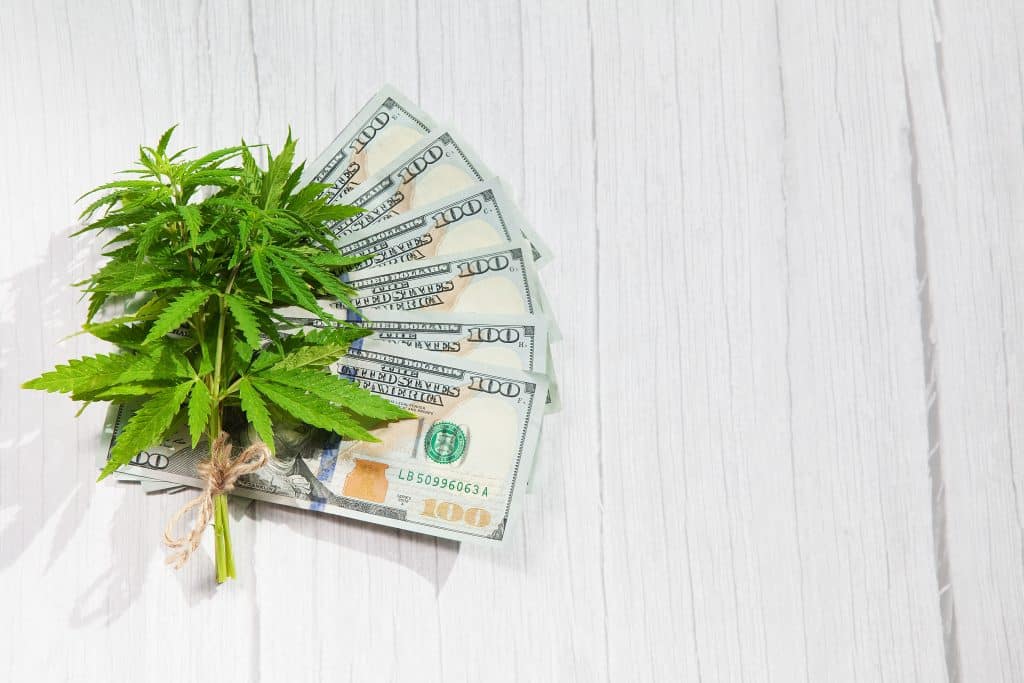Maryland was one of two states that passed a cannabis legalization measure in last November’s elections; and its not wasting time getting things started. Whereas some states take years to get measures approved, this state is doing it in less than one. With legislation recently signed, Maryland is set to open its adult-use market July 1st.
The Maryland ballot measure
Out of five states with cannabis legalization ballot measures last fall, two managed to get their measures voted-in by the people. Maryland and Missouri were the winners; while Arkansas, North Dakota, and South Dakota voters decided to remain weed-illegal. Originally six states were supposed to have ballot measures, but Oklahoma did not get its measure approved in time, due to technical system issues, and not because the work to get it on, wasn’t completed.
Maryland used Question 4 for its adult-use ballot measure: the Marijuana Legalization Amendment. According to the measure, if voted in, the adult-use market would open less than a year later, in the summer of 2023. The amendment directs the Maryland State Legislature to create and pass regulatory laws to govern things like possession and use, distribution, and taxes.
The vote was successful for Maryland. In fact, the margins were pretty wide. A final tally found 67.20% of the voting population voted yes to legal cannabis, accounting for 1,302,161 of the votes. Only 32.8% were not on-board with this, which accounted for 635,572 votes. To give an idea, the other state to pass its voter ballot, Missouri, had a much closer to 50/50 breakdown in votes.
Thanks for joining! We’ve got the Cannadelics Weekly Newsletter to keep you informed; which comes with a wide selection of promos for weed flowers, vapes and smoking devices, edibles, cannabinoids (like delta-8), amanita mushroom products, and way, way more. Feeling good is great; come do it!
Before the vote took place, Maryland approved a medical program in 2013. A year later it instituted a decriminalization policy, which allows users to possess up to 10 grams for personal use; something that was a misdemeanor with a $500 fine and up to 90 days in jail, previously attached. Back in 2010, Maryland wasn’t terribly weed-friendly at all, and had the 5th highest state arrest rate for cannabis possession. Whereas the national rate of cannabis arrests at that time was 256 per 100,000 people, in Maryland it was 409 per 100,000. The state has come a long way.
Maryland passed laws for adult-use market
In order to fulfill the ballot-measure’s promise of a summer start date, Maryland’s congress worked hard to get a bill passed. And it did. In fact, it passed two bills in April. In the end, the House and Senate worked out discrepancies with two bills, not one, and sent formal revised copies of both to the governor on April 7th.
Part of the reason for the rush, is that the voter measure for legalization goes into effect July 1st, and the government wants laws in place when this happens. Considering that both sides of Congress have their own versions; it says a lot about simply wanting to get something done, that the situation didn’t lead to endless fighting and stalemating. Issues like taxation and regulation, where there were differences of opinion between the House and Senate, were pretty quickly worked out. The two bills that got sent to the governor’s desk, are SB 516 and HB 556.
It’s not that the government had a die-hard desire to get this done quickly. But the legislation was considered ‘emergency,’ as the state wants something in place when the legalization begins. For such a situation, approval only requires 3/5 of congressmen to vote positively in both chambers. This is because regardless of what is or isn’t worked out by the government, as of July 1st, it becomes legal for adult residents to possess up to 1.5 ounces of weed. The ballot measure was carefully written to force this on the government, rather than letting the government have leeway to take its time.
Governor Wes Moore signed off on the bills on Wednesday, May 3rd. Said Moore of the laws upon signing, they will “ensure that the rollout of recreational cannabis in our state drives opportunity in an equitable way.” And that “The criminalization of marijuana harmed low income communities and communities of color in a profound way. We want to make sure that the legalization of marijuana lifts those communities now in a profound way.”
What will the Maryland adult-use market look like?
Between the two laws, here are the main bullet points for the upcoming Maryland adult-use market.
Taxes
- Medical sales are tax exempt, but recreational sales will be taxed at 9%.
- 35% of tax revenue will go into a community reinvestment fund. 5% on top of this will go each to counties, a Cannabis Business Assistance Fund, and a Cannabis Public Health Fund.
- Individual locations can’t institute any other taxes.

Regulation
- The industry will be regulated via a newly instated Maryland Cannabis Administration.
- Regulators must start to approve new cannabis business licenses by July 1, 2024.
- There will be initial licensing available for 80 dispensaries and 10 micro-dispensaries (mainly for equity candidates). A second round will allow 120 dispensary licenses, and 190 dispensary micro-licenses (with micro-licensing geared toward equity candidates).
- Initial licensing for growers and processors is 20 and 40 respectively for a regular dispensary, and 30 and 30 for a micro-license. In the second round this will be 25 and 25 for regular, and 70 and 70 for micro.
- The sale of products like delta-8 THC will stop for the most part, as this would now require a license.
- Regulators must formulate laws for cannabis sales on the internet by July 2025.
- Medical patients can grow a max of four plants for personal use.
- Individual locations can’t stop a medical dispensary from transforming into a dual dispensary.
Social equity
- To apply for social equity: a business must be owned by at least 65% that either lived in communities disproportionately and negatively affected by the drug trade for a minimum of five of the last 10 years; have attended public school in an affected area for at least five years; or meet some other requirement of disparity.
- A yearly $5 million will go to grants for medical dispensaries that create partnerships in some way with social equity applicants. This starts in 2025.
- The creation of a Capital Access Program under the Department of Commerce will provide low interest loans and encourage more opportunities for social equity participants.
Dispensaries
- Dispensaries can’t be within 500 feet of any of the following: schools, childcare facilities, playgrounds, recreational centers, libraries, or public parks.
- Dispensaries cannot be closer than 1,000 feet apart.
- Each business can have a max of four dispensaries.
- Every dispensary must allow a minimum of 25% of its shelf space for products associated with social equity license holders.
- Dispensaries can sell repackage goods.
- Current medical dispensaries are to turn into dispensaries for both medical and recreational.
- Licenses will become dual licenses for both upon the industry start of July 1st, so long as the requisite fee is paid (from 2022 revenue – 10% gross income from cultivators and manufacturers capped at $2 million, plus 8% gross revenue from dispensaries, same cap in place.)
- Consumption lounges can be opened with a license, for social using.
- Cannabis cannot be smoked inside a consumption facility, but can be smoked outside.
The evolution of cannabis laws
One of the things that the Maryland new adult-use policy (and the process to get laws approved) shows, is the progress of the cannabis industry. I write a lot about failings of the cannabis industry when it comes to taxes, regulation, the implementation of social equity programs, and the lack of one system learning from another. Maryland shows it doesn’t have to be this way.
Obviously, we’ll have to wait and see what happens. But there are a few provisions that insinuate the state is trying to do better than other states; many of which are having huge issues with lowered sales right now, amid an industry rife with layoffs and closures. For one thing, if 9% is the full tax rate, that’s way lower than other states, some of which instituted policies with upwards of 30% in taxes, much from sin taxes. Is this low enough to compete with the black market? Maybe… California had to finally lower tax rates last year, but its still having problems.

The state also went further with social equity. Whereas it was stuck in like an afterthought for many states, with no answer as to how someone coming from low means would be able to realistically access such programs; Maryland does more (at least on paper) to ensure these populations actually have a shot at entering the market in some way. Again, how useful these measures really are, remains to be seen.
It also remains to be seen if the regulatory structure and cost is permitting of smaller companies, or, if like in other states, it will be a big-company dominated market. Considering the goal of the government is to bring in taxes, and that it isn’t specifically about promoting small businesses, Maryland might be the next state to promulgate a corporate cannabis industry…and not much else. Of course, such measures also make it difficult to compete with the black market, so once again, it remains to be seen how this goes in the end.
Conclusion
The most impressive part of Maryland and its adult-use market (to me), is the intelligence behind the original ballot measure; which didn’t allow for government infighting to prevent the measure from taking place when it was supposed to. Perhaps even more than seeing states update policy techniques, its interesting to watch how the people introducing and promoting these measures, write them out to be more effective.
Welcome readers. Cool that you made it over to Cannadelics.com; a news site dedicated to bringing you high level and independent reporting for the cannabis and hallucinogen industries. Join us daily to stay informed on important topics; and subscribe to our Cannadelics Weekly Newsletter, to ensure you never miss any updates.









